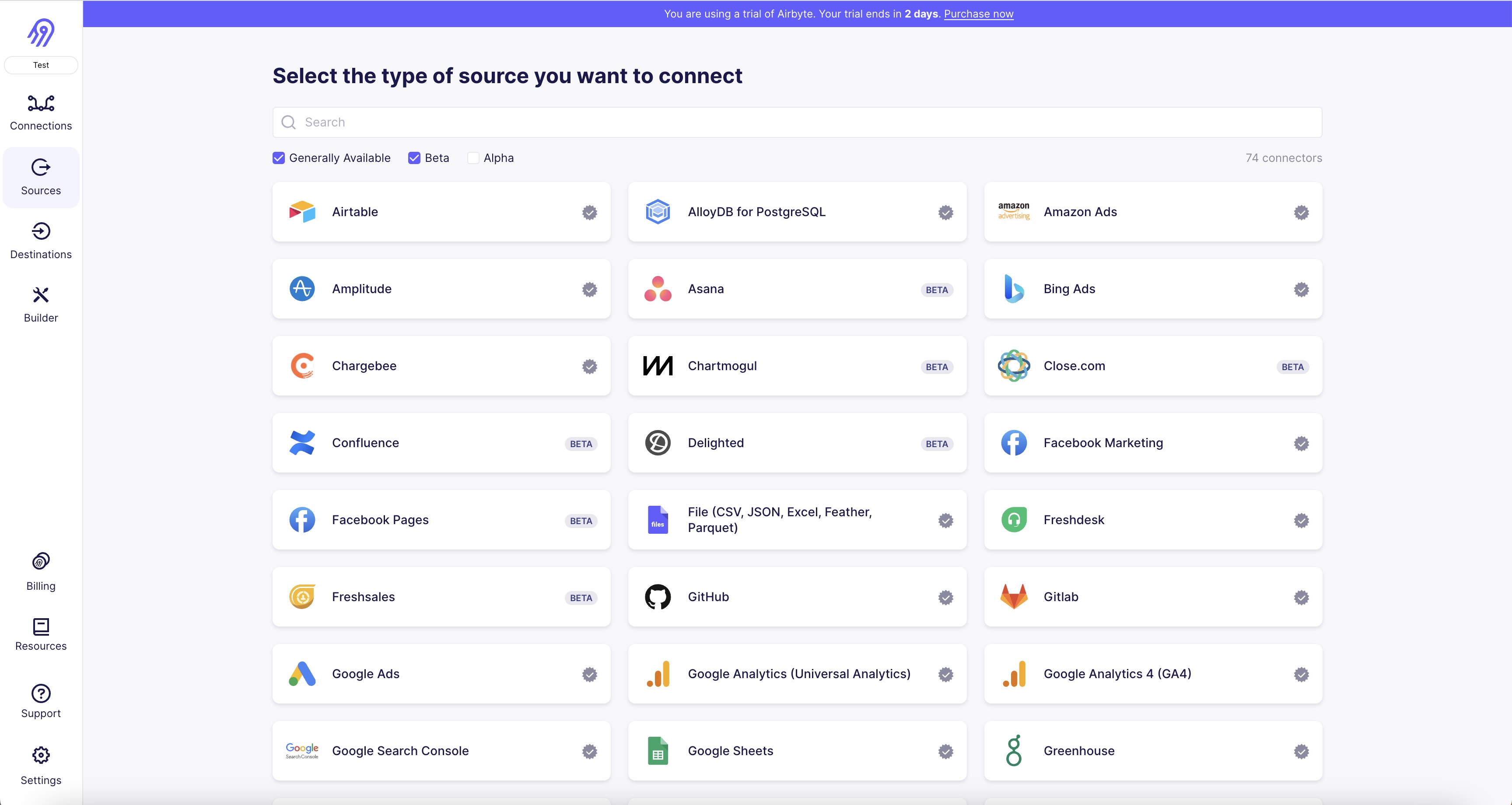Fullstory is a digital experience analytics platform that helps businesses understand how users interact with their websites and applications. It captures every user interaction, including clicks, scrolls, and keystrokes, and provides insights into user behavior, preferences, and pain points. Fullstory's features include session replay, which allows businesses to watch recordings of user sessions to identify issues and opportunities for improvement, as well as heatmaps, funnels, and conversion analytics. The platform also integrates with other tools such as Google Analytics and Salesforce to provide a comprehensive view of user behavior across the entire customer journey. Overall, Fullstory helps businesses optimize their digital experiences to improve customer satisfaction and drive business growth.

1. First, navigate to the Airbyte website and log in to your account.
2. Once you are logged in, click on the ""Sources"" tab on the left-hand side of the screen.
3. Scroll down until you find the Fullstory source connector and click on it.
4. You will be prompted to enter your Fullstory API key. If you do not have one, you can generate one by following the instructions on the Fullstory website.
5. Once you have entered your API key, click on the ""Test"" button to ensure that the connection is working properly.
6. If the test is successful, click on the ""Save"" button to save your Fullstory source connector settings.
7. You can now use the Fullstory source connector to import data from Fullstory into Airbyte.
8. To set up a new data integration, click on the ""Destinations"" tab on the left-hand side of the screen and select the destination you want to use.
9. Follow the instructions for setting up the destination and mapping the Fullstory data to the appropriate fields in the destination.
10. Once you have completed the setup process, you can run the integration to import data from Fullstory into your destination.


With Airbyte, creating data pipelines take minutes, and the data integration possibilities are endless. Airbyte supports the largest catalog of API tools, databases, and files, among other sources. Airbyte's connectors are open-source, so you can add any custom objects to the connector, or even build a new connector from scratch without any local dev environment or any data engineer within 10 minutes with the no-code connector builder.
We look forward to seeing you make use of it! We invite you to join the conversation on our community Slack Channel, or sign up for our newsletter. You should also check out other Airbyte tutorials, and Airbyte’s content hub!
What should you do next?
Hope you enjoyed the reading. Here are the 3 ways we can help you in your data journey:



What should you do next?
Hope you enjoyed the reading. Here are the 3 ways we can help you in your data journey:



Ready to get started?
Frequently Asked Questions
Fullstory's API provides access to a wide range of data related to user behavior on a website or application. The following are the categories of data that can be accessed through Fullstory's API:
1. Session data: This includes information about user sessions, such as session ID, start and end time, and duration.
2. Page data: This includes data related to the pages that users visit, such as page URL, title, and referrer.
3. Event data: This includes data related to user interactions with the website or application, such as clicks, form submissions, and page scrolls.
4. User data: This includes data related to user attributes, such as user ID, email address, and location.
5. Device data: This includes data related to the devices that users are accessing the website or application from, such as device type, operating system, and browser.
6. Error data: This includes data related to errors that occur on the website or application, such as error messages and stack traces.
Overall, Fullstory's API provides a comprehensive set of data that can be used to gain insights into user behavior and improve the user experience.
